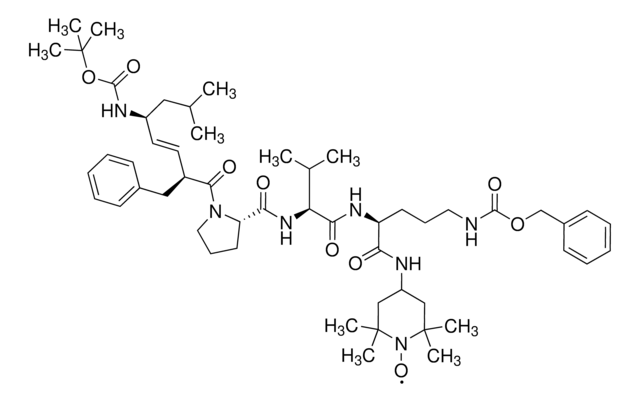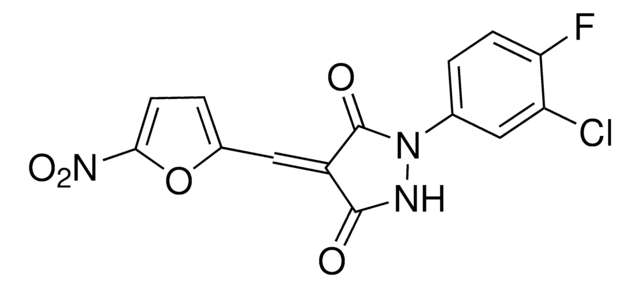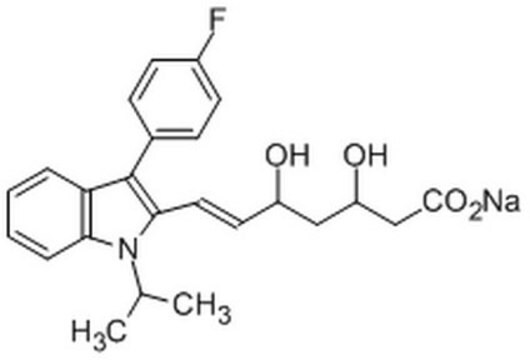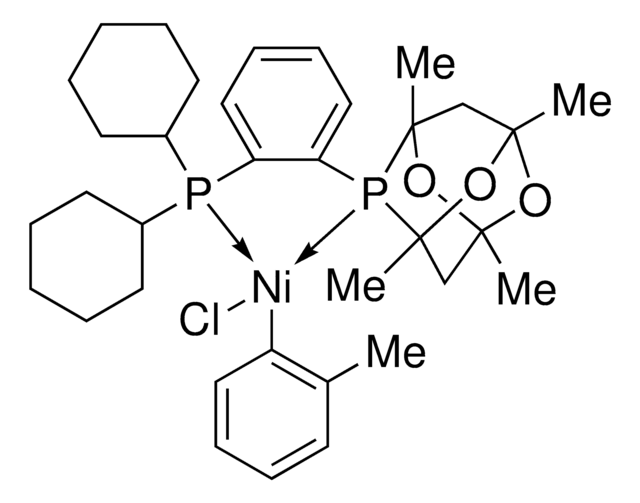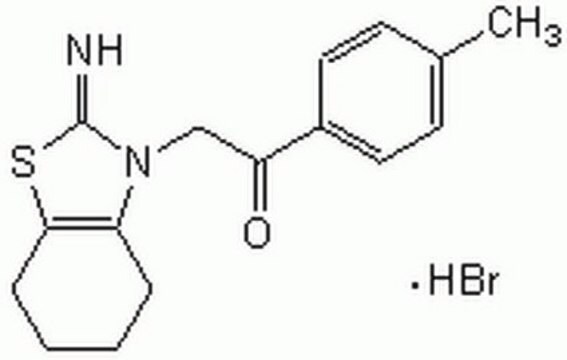Kluczowe dokumenty
SML2807
JP4-039
≥98% (HPLC)
Synonim(y):
4-[[(3E,5S)-5-[[(1,1-Dimethylethoxy)carbonyl]amino]-7-methyl-1-oxo-3-octen-1-yl]amino]-2,2,6,6-tetramethyl-1-piperidinyloxy, JP 4-039
About This Item
Polecane produkty
Poziom jakości
Próba
≥98% (HPLC)
Formularz
powder
kolor
faint yellow to dark orange
rozpuszczalność
DMSO: 2 mg/mL, clear
temp. przechowywania
−20°C
ciąg SMILES
O=C(C/C=C/[C@@H](NC(OC(C)(C)C)=O)CC(C)C)NC1CC(C)(C)N([O])C(C)(C)C1
InChI
1S/C23H42N3O4/c1-16(2)13-17(25-20(28)30-21(3,4)5)11-10-12-19(27)24-18-14-22(6,7)26(29)23(8,9)15-18/h10-11,16-18H,12-15H2,1-9H3,(H,24,27)(H,25,28)/b11-10+/t17-/m1/s1
Klucz InChI
AJHRJWQXDNEJAG-SXSDINLZSA-N
Działania biochem./fizjol.
Kod klasy składowania
11 - Combustible Solids
Klasa zagrożenia wodnego (WGK)
WGK 3
Wybierz jedną z najnowszych wersji:
Certyfikaty analizy (CoA)
It looks like we've run into a problem, but you can still download Certificates of Analysis from our Dokumenty section.
Proszę o kontakt, jeśli potrzebna jest pomoc Obsługa Klienta
Masz już ten produkt?
Dokumenty związane z niedawno zakupionymi produktami zostały zamieszczone w Bibliotece dokumentów.
Nasz zespół naukowców ma doświadczenie we wszystkich obszarach badań, w tym w naukach przyrodniczych, materiałoznawstwie, syntezie chemicznej, chromatografii, analityce i wielu innych dziedzinach.
Skontaktuj się z zespołem ds. pomocy technicznej